Can Cats Eat Raw Meat?
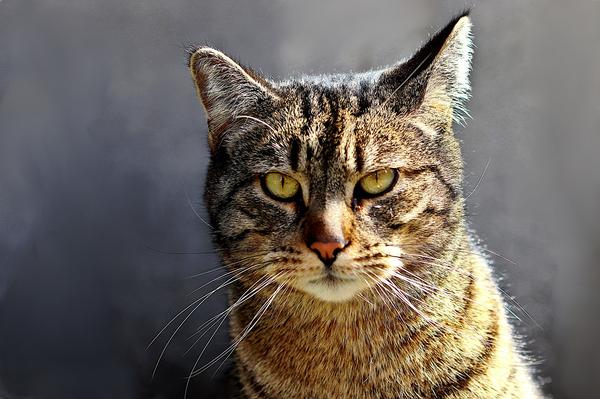
Ever wondered if cats can eat raw meat?
Does the idea of feeding your furry friend a natural, primal diet intrigue you?
Well, I totally get it – we all want the best for our adorable little felines. 🐱
Let's dive into this meaty topic, shall we?
Safety Precautions When Feeding Cats Raw Meat
When it comes to keeping your beloved feline friends safe while they chow down on raw meat, there are a few things you should bear in mind. Here are twelve precautions that can make all the difference:
- Don't rush things - take it slow and introduce raw meat gradually to avoid tummy troubles for your cats.
- Just like with any major dietary change, it's always a good idea to check in with a vet before diving into a raw food diet for your kitties.
- If you're pregnant or have a weakened immune system, be especially careful when handling raw food - better safe than sorry!
- Raw meat is fine but steer clear of feeding your cats raw eggs or unpasteurized milk, as these can pose risks.
- Take note of the potential dangers lurking in undercooked meat and other raw foods - nobody wants their furry friend dealing with listeriosis.
- Stick to whole cuts of meat and leave ground beef off the menu - it has more bacteria and fat that aren't great for your cats' health.
- As long as you prepare and store it properly, raw meat can be part of your cat’s diet without issue.
- Keep things clean and prevent any nasty cross-contamination by washing your hands and dishes thoroughly when preparing meals.
- Remember, exposure to raw meat should only last for about 20 minutes tops - this helps stop any unwanted bacterial growth.
- Keep those raw diets safely stored in the freezer to prevent spoilage and, you guessed it, cross-contamination.
- When picking out meats for your cats, always opt for ones that are fresh and meant for humans to consume - you wouldn’t want to feed them something questionable.
- Your preparation area should be spick and span both before and after serving raw meat, and if any goes uneaten within 20 minutes, toss it out.
Now let's talk about bones and cooked bacon - they're no good for your kitties. 🐱
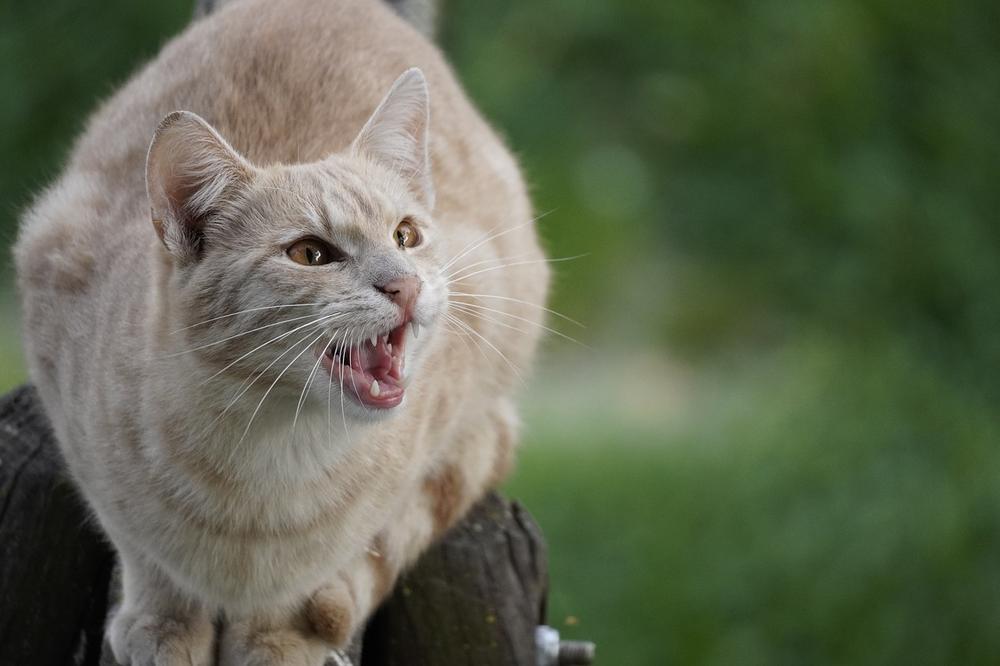
Bones can be dangerous, and cooked bacon packs a salty and fatty punch that isn't what cats need. Play it safe!
Main points I'll expand upon further down this article:
- Cats are natural carnivores and benefit from a diet that includes raw meat.
- Raw cat food offers short-term and long-term health benefits.
- Chicken is a popular choice for raw meat, providing essential nutrients.
- Homemade diets require expert advice and careful consideration of cat nutrition.
- Dry food should only be used in combination with wet food for a balanced diet.
- A raw food diet for cats is low in carbohydrates and high in protein.
- Kittens should be gradually transitioned to a raw meat diet.
- Handling raw meat carries the risk of bacterial contamination.
- There are many foods that are toxic to cats, but raw meat can be beneficial for certain health issues.
- Commercial options are available for those who prefer convenience and proper nutrition.
But what if I told you there's more to a cat's diet than just raw meat?
What other options are out there to ensure your feline friend gets a well-rounded, balanced meal?
Let's dive in and explore the world of cat nutrition together...
Cats' Natural Diet and the Role of Raw Meat
Raw meat is essential for cats' natural diet as they are natural hunters and thrive on a protein-rich diet. However, you ought to maintain a balanced diet by incorporating a variety of raw meats to ensure your cat gets all the necessary nutrients for a healthy and vibrant life.
When it comes to feeding your cat, raw meat is the way to go. Cats are natural hunters and thrive on a diet that mimics their carnivorous feeding patterns.
If you want your cat to be healthy and vibrant, you need to provide them with high-quality wet food that is primarily composed of meat.
Cats are built to eat protein-rich diets, and it gives them the energy they need to live their best lives.
But before you jump into exclusively feeding your cat raw meat, there's an important thing to bear in mind:
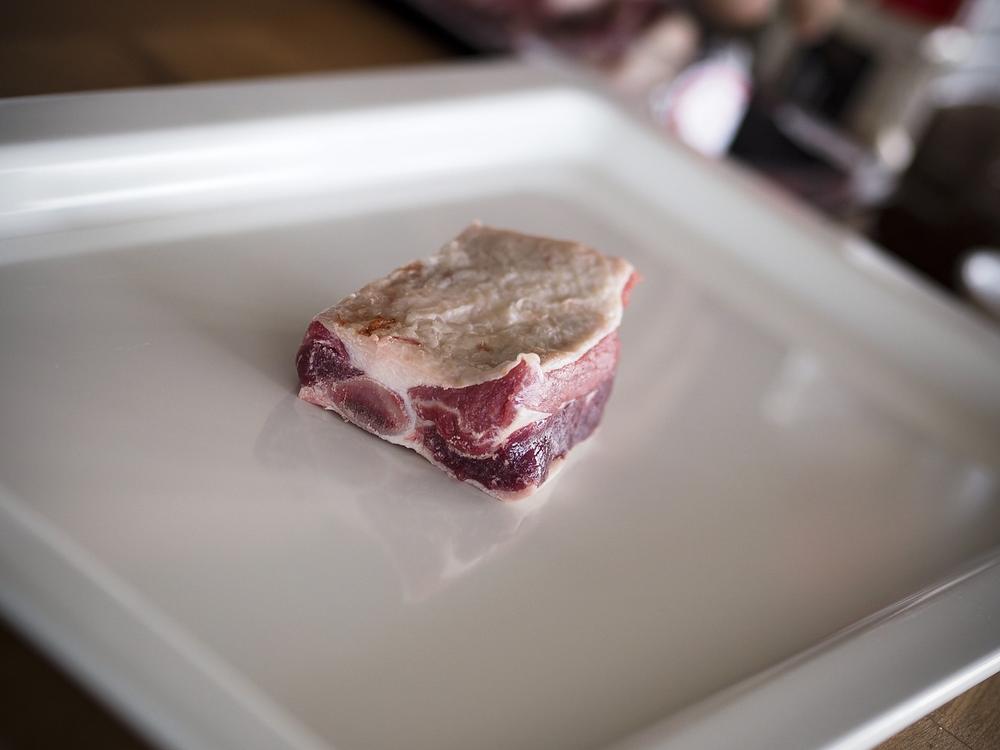
Balance.
A well-rounded diet is crucial for your cat's overall health and well-being.
To ensure your cat gets all the necessary nutrients, you should incorporate a variety of raw meats into their diet. This approach closely mirrors what wild cats would eat, so your furry friend can experience the same satisfaction through their meals.
While raw meat should be a part of your cat's diet, it shouldn't be the sole focus.
Your cat needs a full range of nutrients to have a happy and healthy life.
Benefits of a Raw Meat Diet for Cats
Improves Coat Condition and Skin Health
You know, feeding your cat a raw meat diet can really make a difference in their coat and skin health.
It's like giving them a luxurious spa treatment.
Raw meat is packed with omega-3 fatty acids, which are essential for keeping their skin healthy.
Not only that, but these amazing fatty acids also give their coat a beautiful shine, so they'll look absolutely stunning.
Say goodbye to excessive shedding and hello to a kitty who will make all the neighbors jealous!
Provides Essential Amino Acids and More
Let me tell you something fascinating about raw meat - it has all the important amino acids that your cat needs to thrive!
Think of these amino acids as the building blocks of protein, something your cat needs to grow and stay healthy.
Plus, raw meat also contains other essential nutrients like selenium, niacin, phosphorus, vitamin B6, and B12.
These nutrients are like little superheroes working together to keep your cat feeling their best.
Adds Valuable Nutrients Missing in Commercial Cat Food
Sure, commercial cat food might be convenient, but listen up:
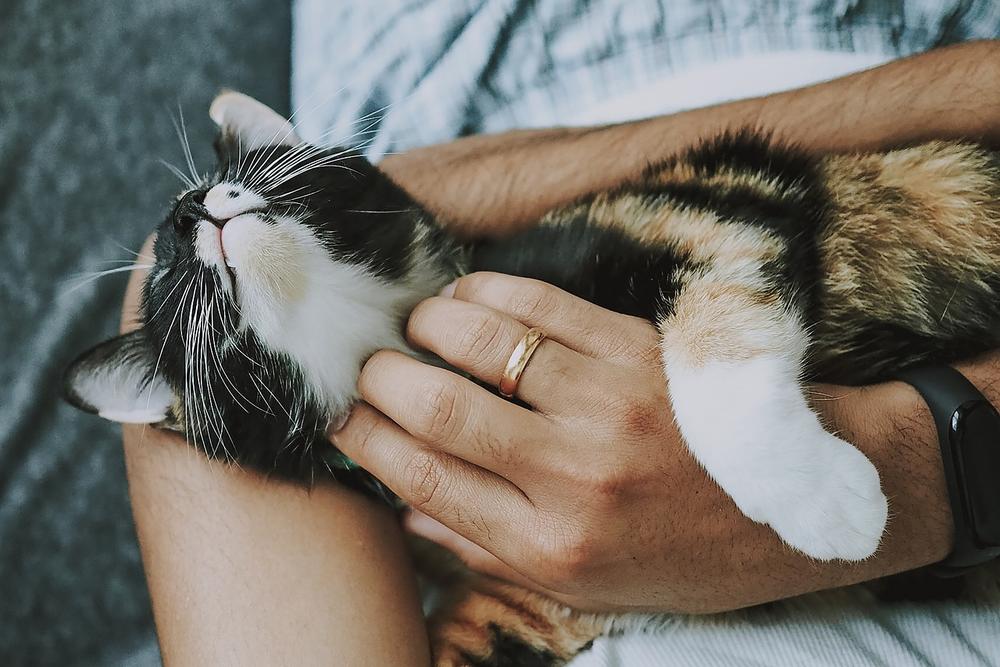
It doesn't always have everything your furry friend needs. That's where a raw meat diet comes in.
It adds those missing nutrients that can really amp up your cat's health. Imagine giving them a complete and unprocessed meal filled with raw meat, offal, bone, and veggies - it’s like creating their own personal gourmet feast.
By doing this, you'll make sure they get all the good stuff and help them thrive in every way possible.
So go ahead, prioritize your cat's well-being by making the switch to a raw meat diet.
Trust me, I've seen the amazing benefits firsthand, and your feline friend will thank you with every happy purr.
And here's the deal...
While a raw meat diet can offer numerous benefits for cats, you have to understand the necessary considerations and precautions.
So, let's dive into the next section and explore the potential risks and challenges associated with a raw meat diet for our feline friends.
Trust me, you won't want to miss this!
The Importance of Balanced Nutrition for Cats on a Raw Meat Diet
Here's how you can make sure your cat gets the right nutrition from a raw meat diet:
- Give your cat small amounts of organ meat like liver or heart - they need those essential vitamins and minerals.
- If you're going for commercially available raw diets, know the difference between complete options (aka full meals) and complementary options (which need to be balanced with other foods).
- Get advice from experts and really dive into cat nutrition if you want to make homemade raw diets.
- Don't even think about making homemade meals without proper guidance - trust me on this.
- Mix dry and wet food, but keep the complementary food to less than 3% of what your cat eats.
- When it comes to lamb, feed smaller portions and remove excess fat before giving it to your furry friend.
- A raw food diet means giving your cat raw meat, organs, and sometimes ground bones - keep that in mind.
- Make sure you provide specific nutrients like arachidonic acid, vitamin A, vitamin D, B vitamins, and taurine (your cat needs them!).
- Keep it all balanced by mixing raw, canned, and dry food together.
- Mix things up by serving different raw meats along with other foods - let your cat enjoy some variety.
- Use raw diets as treats or alternate them with other meals to avoid any nutritional gaps.
Just stick to these tips, and your cat will have a perfectly balanced raw meat diet.
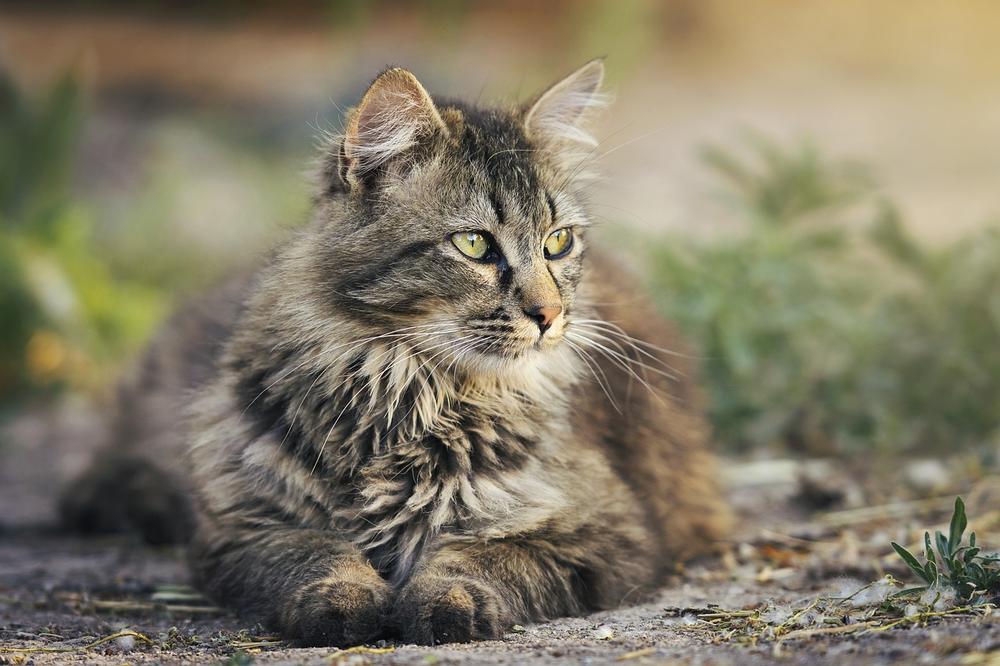
Trust me, they'll love it. 😺
And now, let's talk about how to safely transition kittens to a raw meat diet and why it's best to wait until they're a bit older...
Transitioning Cats to a Raw Meat Diet
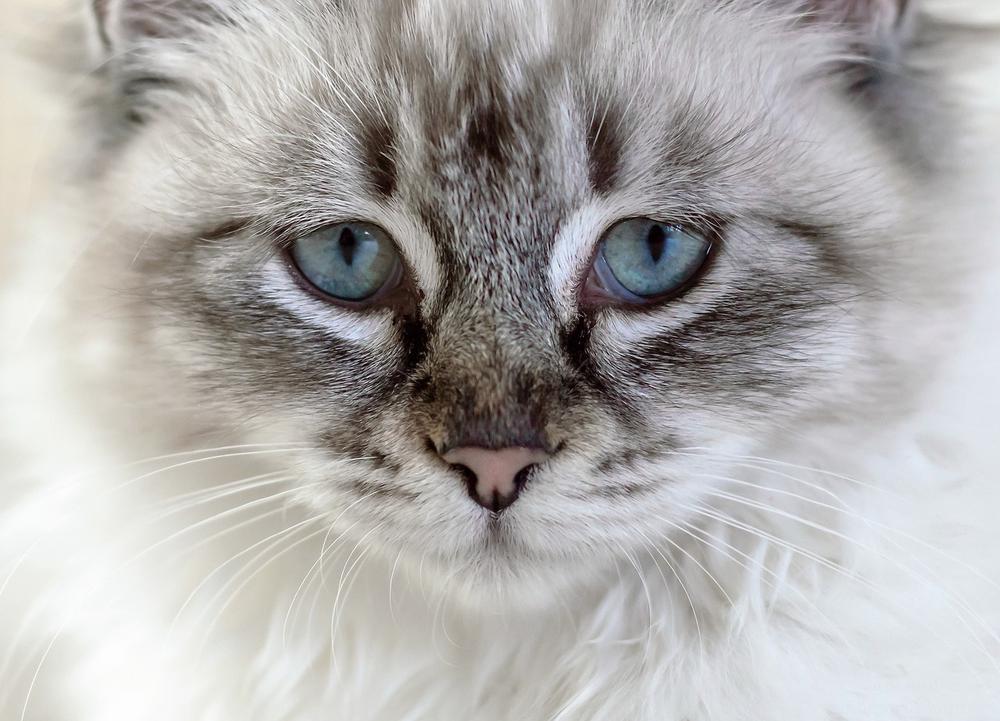
Transitioning cats to a raw meat diet can be a gradual process to ensure proper digestion and acceptance.
- Start by offering small chunks or finely ground meat to kittens during the transition period. This will make it easier for them to digest.
- As part of their weaning process, introduce a balanced diet that includes baby food and KMR (kitten milk replacer). This will help provide essential nutrients.
- Begin the transition to raw meat slowly, over several days. Start with a combination of 25% raw food and 75% existing pet food, gradually increasing the proportion of raw food every few days.
- It is generally recommended to wait until kittens reach 20 weeks of age before introducing a raw diet. By this time, their immune system is more developed.
- When transitioning to raw meat, it's important to monitor your cat's reactions and adjust accordingly. Some cats may require a slower transition or have different dietary needs.
A raw meat diet should always be properly researched and discussed with a veterinarian to ensure its suitability for your cat's specific needs.
Addressing Concerns About Bacterial Contamination in Raw Meat Diets for Cats
To keep your cat safe from bacterial contamination in raw meat, follow these 10 steps:
- Freeze the raw meat for at least three days. This kills any parasites.
- Understand the three types of harmful bacteria: Salmonella, Listeria monocytogenes, and E. coli.
- Know that cats can pass on Salmonellosis to humans through raw meat.
- Be aware that Salmonella can cause food poisoning and make you sick.
- Notice that symptoms of listeriosis vary depending on where it affects you.
- Realize that pathogenic E. coli in raw meat can give your cat urinary tract infections.
- Be mindful that E. coli contamination can also lead to digestive tract diseases.
- Handle raw meat carefully to avoid spreading bacteria.
- Take precautions to prevent cross-contamination in your kitchen.
- Talk to a veterinarian for advice on feeding raw meat to your cat.
Keep your cat healthy by addressing bacterial concerns. Stay informed and watchful to protect them.

But what if raw meat doesn't seem like the best option for your cat?
Well, cooked meat can be a suitable alternative or supplement to address any concerns you may have!
Feeding Raw Meat to Cats With Dietary Restrictions or Health Issues
If your cat has dietary restrictions or health issues, here's how you can safely feed them raw meat:
- You can give cooked meat to cats with sensitive stomachs, either as an alternative or alongside their regular food.
- Don't feed your cat any forbidden foods like milk, bones, sausages, or ice cream. Those are big no-nos for them.
- Keep your furry friend away from moths, frogs, peppermint oil, cake, beans, mayo, and broccoli. These things won't be good for their tummy.
- Be cautious with almond milk, sugar, cucumber, sweet potato, honey, peanuts, porridge, and coconut when it comes to feeding cats. It's best to limit or avoid them altogether if possible.
- If your cat is allergic, ducks might be a better option than chicken due to the heme iron content. It could be easier on their system.
- Watch out for various raw foods like chicken, eggs, bananas, nuts, blueberries, crisps, rice, pasta, garlic, potatoes, carrots, vegetables, raspberries, pineapple, onions, oranges, grapes, bread, lactose-free milk, adult cat food, sweetcorn, avocado, tomatoes, strawberries, catnip, ham, and popcorn. These foods may not agree with your cat's digestive system.
- If your cat has kidney, urinary tract, bowel movement, or protein absorption issues, consider introducing raw meat into their diet. It might help alleviate some of their problems.
You can guarantee a proper diet for your cat with limitations or health problems by adhering to these recommendations.
Always be sure to consult with your veterinarian about specific dietary recommendations tailored to your cat's individual needs.
They're the experts who can guide you in the right direction.
For those who want to explore more options for their cat's diet, there are plenty of additional choices to consider.
Want to know what healthy snacks and treats you can offer?
Let's dive in and discover some exciting alternatives!
Raw Meat Alternatives for Cats
If you want to feed your cat raw meat, there are a bunch of choices for you to think about. Here's what you can consider:
- Raw boneless fish: Go for salmon or mackerel since they give your cat protein and different tastes and nutrients. But don't overdo it with the fish because too much can make your cat low on thiamine.
- Healthy meat snacks: Chicken, turkey, pork liver, and birds make great treats for your cat. These options match what cats naturally eat and can be a tasty extra in their regular meals.
- Venison: If you want something lower in fat and calories, venison is worth a look. It's less likely to cause allergic reactions and can be a good choice for cats on special diets.
- Other raw meat: Don't focus only on chicken or beef. Your cat can have raw lamb, rabbit, and other types of meat to keep their diet balanced. But always check with your vet first to make sure these proteins meet your cat's nutritional needs.
- Pre-made raw meals: If you're into convenience, you can find pre-made raw meals for cats that have all the right nutrition.
Feeding your cat raw meat takes care and knowledge about safety and making sure they get everything they need.
Talk to your vet before making any big changes to your cat's diet and follow proper practices for preparing and handling raw meat.
By giving your cat a variety of raw meat options, you can give them a well-rounded and nutritious diet that both pleases their taste buds and keeps them healthy.
Pay attention, because here's the deal: You've just learned about raw meat alternatives for cats, but there's more to uncover further down the blog post. Keep reading because I have important information about common misconceptions surrounding raw meat diets for cats.
Now that you've explored the various raw meat alternatives for cats, let's delve into the potential risks and controversies involved...
Potential Risks of a Raw Meat Diet for Cats
Feeding your cats raw meat can come with risks, so you should be aware of them.
Here's what you need to know:
- You might have to add calcium if bones aren't included.
- Raw meat can be a hot topic and has health risks attached.
- Avoid making your own raw diets without guidance.
- Look into commercially available raw cat food choices.
- Be careful with raw beef and pork due to disease and parasite concerns.
- Raw meat can be a danger for your cat's health.
- There's a chance of imbalances between calcium and phosphorus ratios.
- It's crucial to get proper guidance from experts.
- Make sure the diet has all the essential nutrients in balance.
Your cats' well-being should always be a priority.
Talk to your vet for advice on the best dietary options for your furry friends.
Now that we've covered the potential risks of a raw meat diet for cats, let's delve into the specifics of including raw fish in their diet.
You may be surprised to learn that while frozen raw fish can help eliminate common parasites found in fish, it is not recommended for home-feeding cats.
However, certain commercial diets do include raw fish.
So, why is raw fish discouraged for some cats?
And what benefits does salmon, rich in omega-three fatty acids, offer?
Let's find out!
Is It Safe to Feed Cats Raw Fish?
| Is It Safe to Feed Cats Raw Fish? | |
|---|---|
| Raw Fish | It is generally recommended to freeze raw fish before offering it to eliminate parasites. Raw fish is not recommended for home-feeding cats, but certain commercial diets may include it. |
| Salmon | Salmon can provide various benefits to cats. It is a good source of omega-3 fatty acids, which support a healthy coat, skin, and immune system. However, it should still be fed in moderation. |
| Tuna | Caution should be exercised with tuna as it can deplete essential B vitamins in cats. While small amounts of tuna are generally safe, it should not make up a significant portion of the cat's diet. |
| Commercial Diets | Certain commercial diets might include raw fish as an ingredient. If opting for such products, ensure they are from reputable brands and undergo thorough quality control procedures to minimize the risk of parasites or bacterial contamination. It's always good to consult with a veterinarian before incorporating these diets into your cat's feeding plan. |
So you're considering feeding your cat raw fish?
Well, before you make a decision, there's a few important things I need to tell you.
First of all, if you do decide to go ahead with it, make sure to freeze the fish beforehand.
Why?
Freezing actually helps get rid of any pesky parasites that might be lurking in the fish.
And trust me, parasites are not something you want your precious feline dealing with.
But here's the thing, feeding your cat raw fish at home is generally not recommended.
You know why?
Because many commercial diets already include raw fish.
So unless you're willing to put in the extra effort to ensure proper nutritional balance, sticking to those commercial options might be the safer choice for your furry friend.
Now, let's talk about salmon.
This fish is like a superhero when it comes to raw food.
It's loaded with omega-three fatty acids which can give your cat shiny fur, healthy skin, and a strong immune system.
Not only that, it also provides important nutrients like potassium, B vitamins, selenium, and niacin. It's pretty impressive, right?
But wait, there's a downside to tuna. While it may be tempting to give your kitty some tasty tuna treats, be cautious. Tuna can actually decrease essential B vitamin levels in your cat's body.
So go easy on the tuna, alright?
Now, always be sure to consult with your vet because every cat is unique and may have different dietary needs.
They've got the meow power when it comes to advising what's best for your precious ball of fur.
Take care and keep those kitties happy and healthy!
And before I forget, if you're looking for more information on whether it's safe for your beloved cat to eat raw fish, I've got you covered.
Make sure to check out my blog post, "Can Cat Eat Raw Fish".
It's filled with expert advice and tips specifically tailored to answer your burning questions.
Don't miss out on this invaluable resource to keep your furry friend happy and healthy.
Common Misconceptions About Raw Meat Diets for Cats
Raw meat diets are often blamed for causing aggression in cats, but you need to remember that behavioral issues in felines arise from factors outside their diet.
Misconceptions surrounding raw meat diets persist, yet it’s vital to note that customer support offers contact information for individuals with concerns or questions.
While some may assume that feeding cats raw meat is the root cause of aggression, it's imperative to comprehend that other elements can be influencing your furry companion's demeanor.
If you require any assistance or have inquiries concerning raw meat diets, customer support is there to lend a helping hand.
And that wraps up today's article.
If you wish to read more of my useful articles, I recommend you check out some of these: Can Cats Eat Honey, Can Cats Drink Spoiled Milk, Can Cats Eat Mussels, and Can Cats Eat Lobsters
Talk soon,
-Sarah Davis